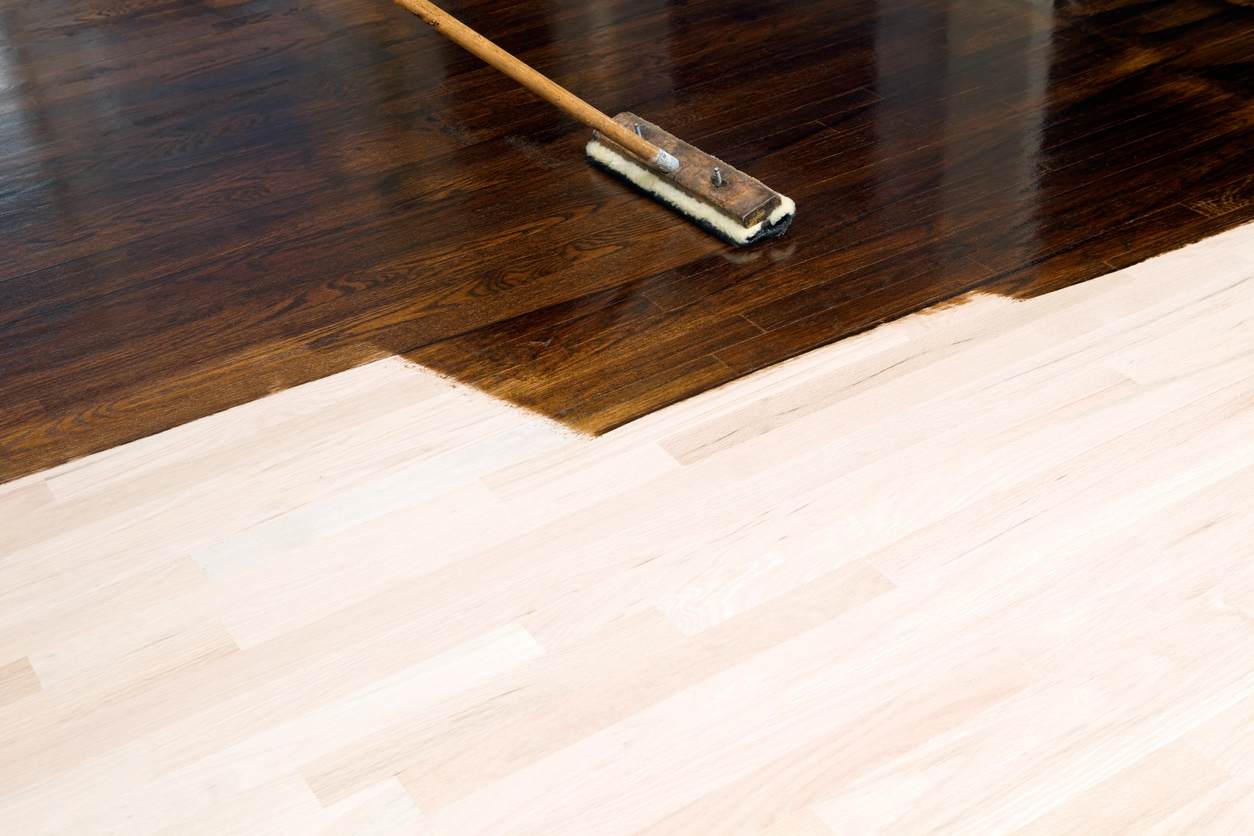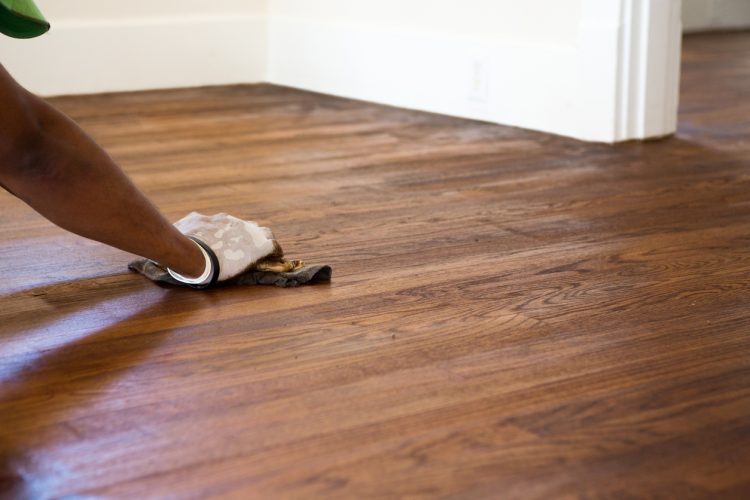Hardwood Floors: A Staining and Color Guide
- Published By: District Floor Depot

Should you or shouldn’t you? You know something needs to be done about those hardwood floors but you’re really not sure if staining them is the right thing to do. After all, it’s time-consuming, messy, and just plain hard work. Plus it can turn into an expensive disaster if you don’t do it just right. But then again, something has to be done about those floors! Choosing between refinishing and staining depends upon a number of factors that we’ll discuss below.
When and If You Should Stain
Staining your wood floors is a big decision that you’ll be living with for many years to come. It can also be expensive to undo if you don’t like the results. That’s why you should ask yourself these questions before proceeding:
What Kind of Wood Floor Do You Have?
Beautiful hardwoods like cherry, mahogany, maple, walnut, and many exotic species don’t need a stain to look gorgeous. Their natural beauty is best highlighted by a simple clear protective sealer. The reason most stains carry the names of these woods is that those stains are typically being used to try to elevate lesser woods to look like these natural beauties.
Almost as if they have a sense of their own beauty, these quality wood species seem to resent efforts to stain them. Their natural oils and tight grains produce blotchy or uneven results at best. It’s much better to let their natural beauty shine without any attempts at enhancement.
On the other hand…Red or white oak and pine are perfect candidates for staining! These less expensive woods take to stain like an actress takes to make-up. They drink up the stain evenly and produce beautiful results as long as the proper application techniques are used.
Are Your Wood Floors Damaged?
Liquids are the bane of wood floors. It doesn’t matter if the liquid is urine from a new puppy, rainwater from a leaky roof, or even tap water from a careless plant watering. It will produce dark, ugly stains on your nice wood floors. As long as it’s just surface damage, staining the floor a darker color than the damaged areas will cause those ugly stains to fade into the new, darker background.
You may only want to consider this option if the stains are large or in a visually prominent place. Oftentimes, a small stain or two can be ‘eliminated’ by the judicial rearrangement of furniture or throw rugs!
Does the Existing Color of the Floor Suit Your Design Aesthetic?
If your design style is rustic chic with lots of warm browns, an ebony floor is going to look totally out of place. However, that same ebony floor would look perfectly at home as part of a sleek, contemporary design. Knowing the design style you want for your home will help you decide whether or not the floors will need stained.
If you’re not sure what color floor will suit the room you’re envisioning, try to find pictures resembling your dream room in magazines or on the internet. Pay special attention to professionally-designed rooms with hardwood floors. If you can find a picture of a room that you absolutely love, and that matches your furnishings, that’s the floor color you want!
Choosing a Stain Color

Flooring is a huge and highly visible design element in a home. You’ll want to get the color just right for a home you’ll enjoy. It’s almost impossible to pick a stain color from a small chip painted on imitation wood. Wood floors accept stain colors differently depending on the species of wood, the floor’s age, and other factors.
The best way to choose a stain color is to test it on the actual floor. Even then, it’s a good idea to test it on both the lightest and darkest boards that make up the flooring. That way you’ll get a better picture of how it will look across the entire floor. If you’ll be staining flooring throughout the house, stain test patches in several areas first and live with them for a few days. That way you can see how the color looks under different lighting conditions and against your kitchen cabinets and other built-ins.
So Many Color Options!
Stain options range from whitewash to nearly black with many color variations in between. Opacity is another factor to consider when choosing a stain. The more opaque the stain, the less you’ll see of the wood grain. This may, or may not, be a plus depending on what kind of wood your floors are and how you feel about the grain of that wood.
Floor Colors from Lightest to Darkest:
- Natural (unstained) wood tends to be the lightest option. It holds up well and shows less dirt than darker floors.
- Whitewashed floors are a popular choice for beach houses.
- Grays are very trendy but take an experienced expert to achieve.
- Golden Oak, Ipswich pine, and Fruitwood are light, golden browns.
- Red tones are less popular because of the difficulty in decorating around them.
- Reddish browns are somewhat easier to incorporate into an overall design scheme.
- Mid-tones are generally neutral browns. They are popular for their traditional feel and work well in older homes since they can help hide some of the imperfections commonly found in older wood floors.
- Dark Walnut, Jacobean, and Ebony are dark, dramatic, and stylish. Dark Walnut is the lightest of the three and tends to show less dirt. Ebony, on the other hand, seems to highlight every speck of dust. Dark colors hide the wood grain and even out the color variations between boards. This makes them popular in contemporary design.
- Duraseal True Black is the darkest of the dark.
Staying True to Your Style
Whether you choose to refinish or stain, your home should be a reflection of you. Your floors should enhance the style and feel of your home. If they make your heart sing when you see them, so much the better! If you’ve decided that your floors are calling out for stain, give District Floor Depot a call. Our flooring experts know how to get the best, most professional-looking results when it comes to staining floors.
